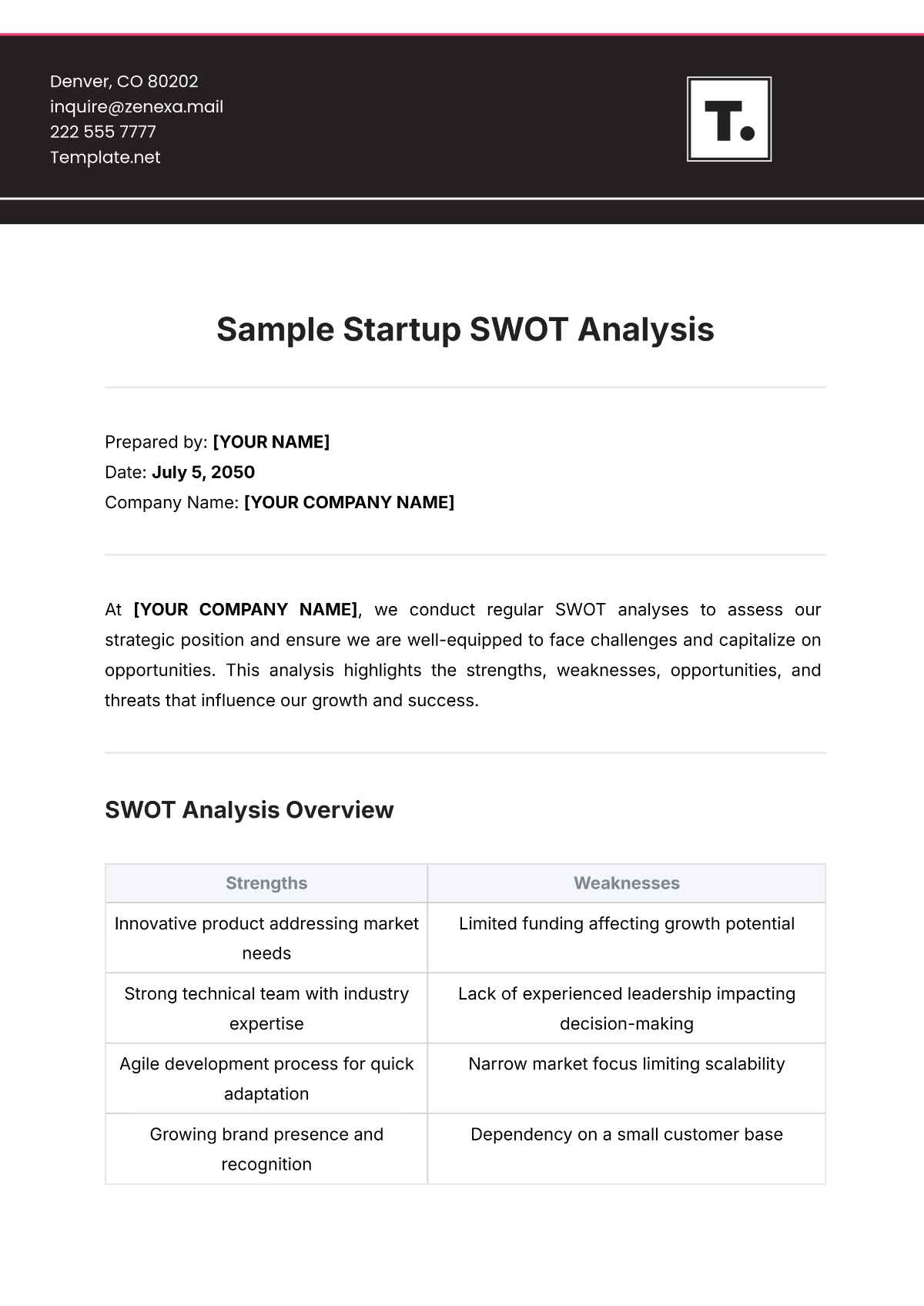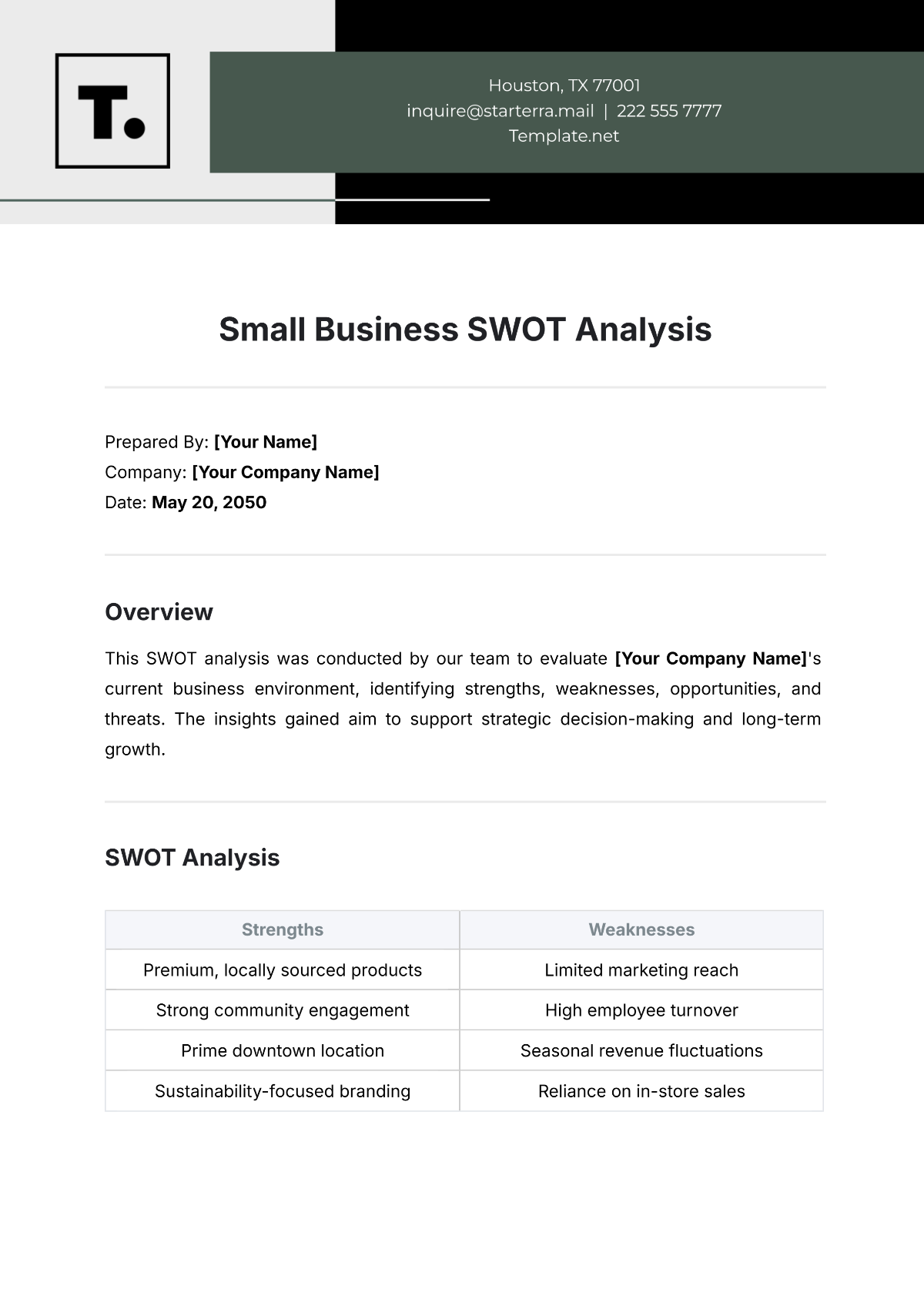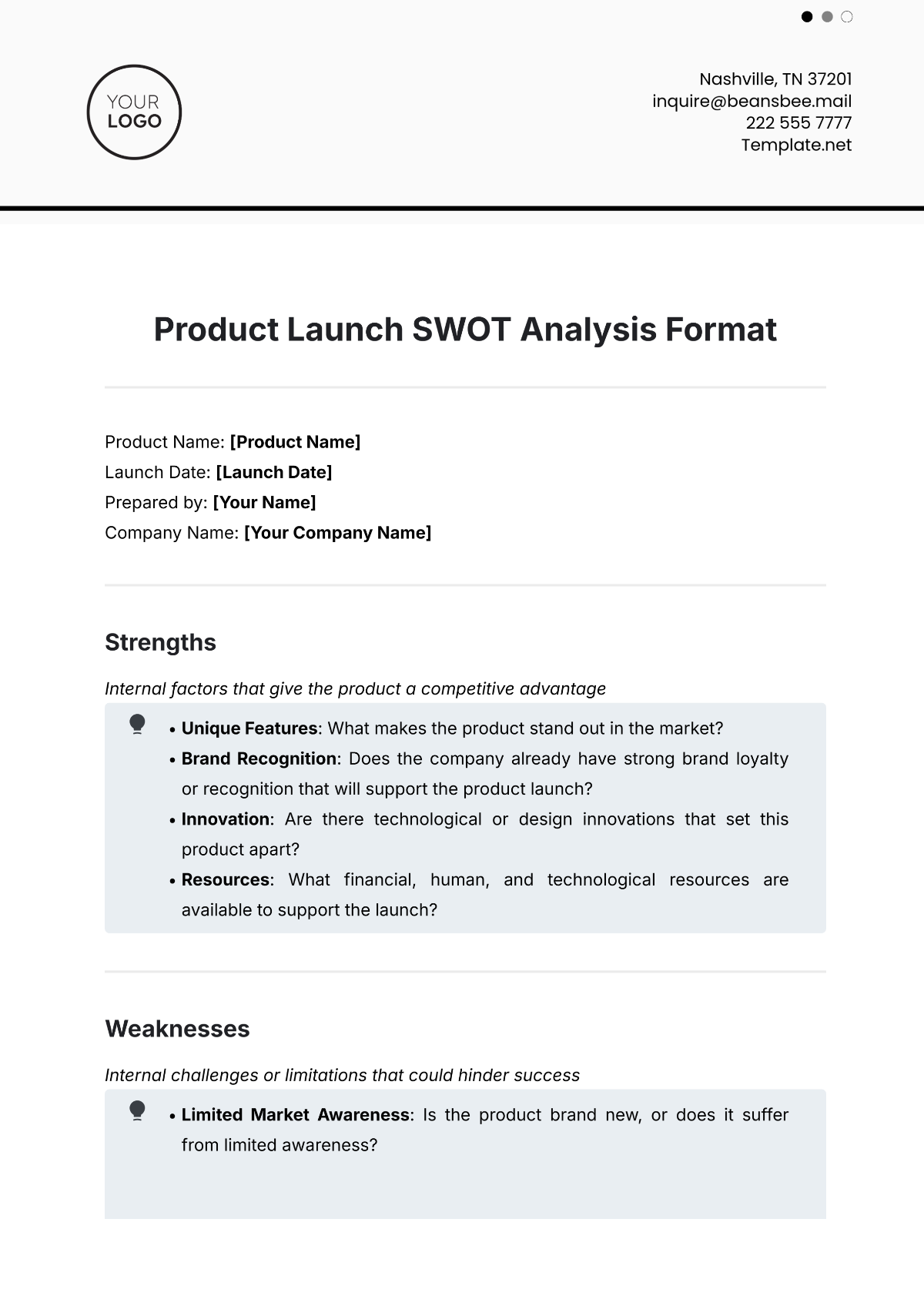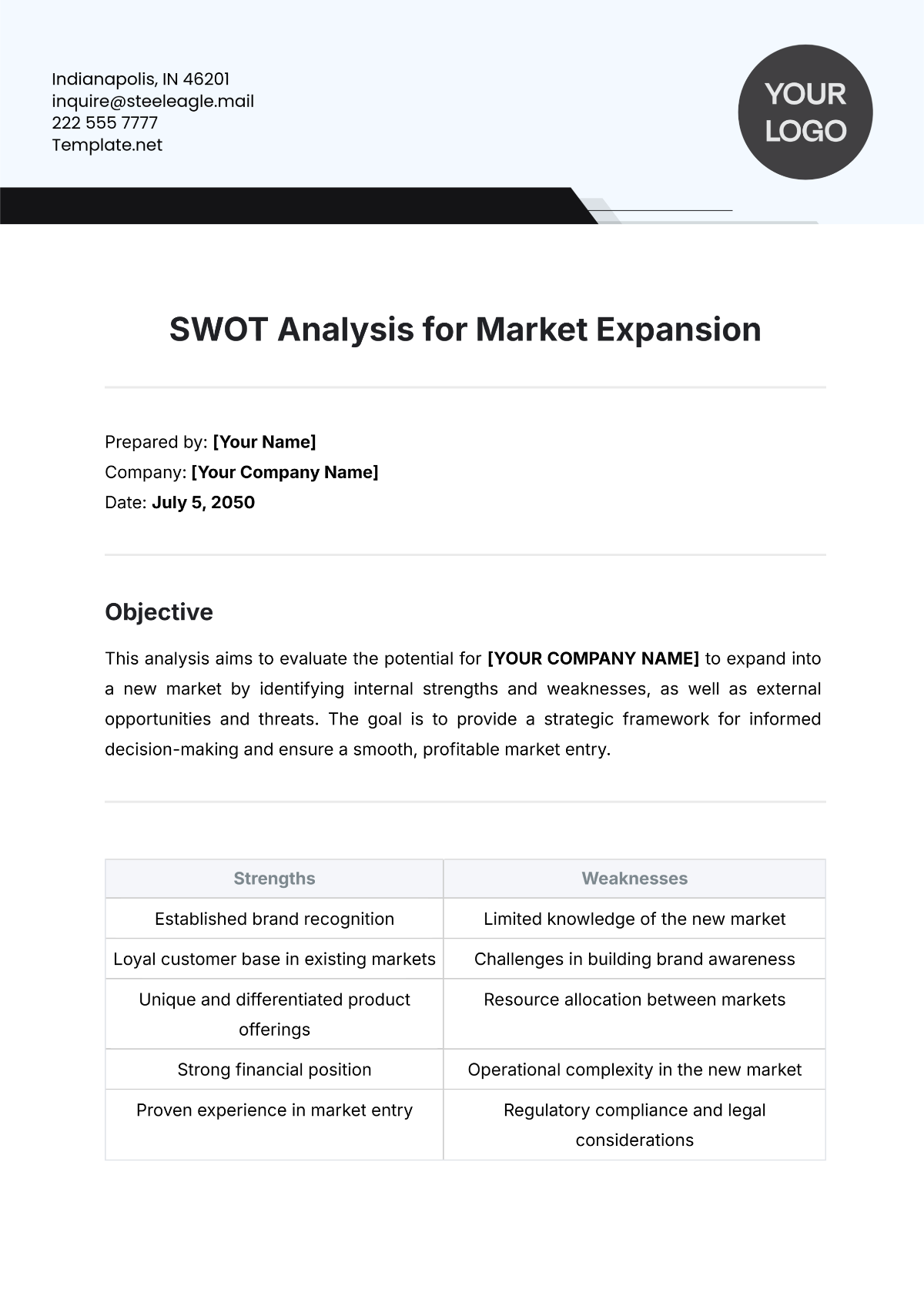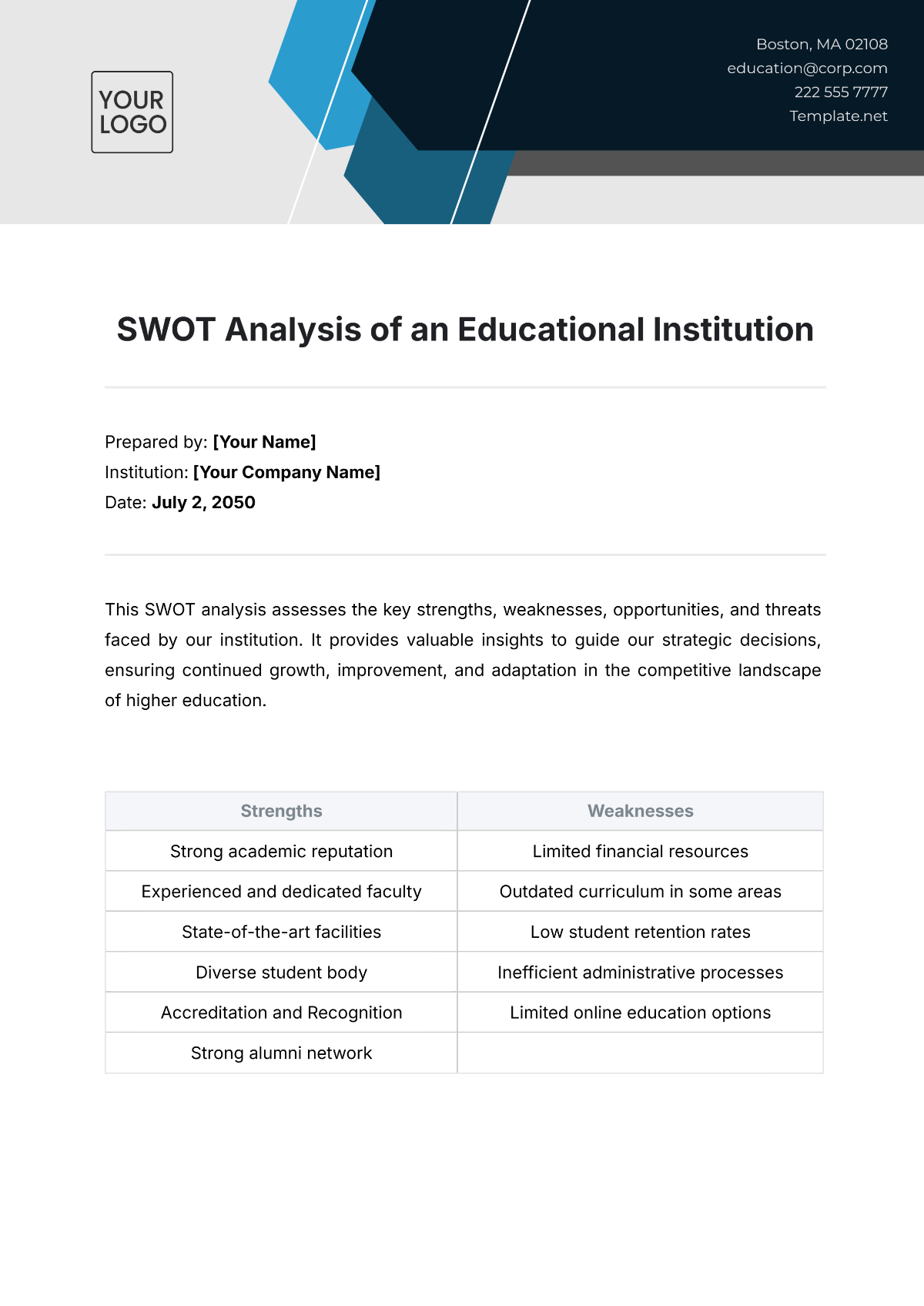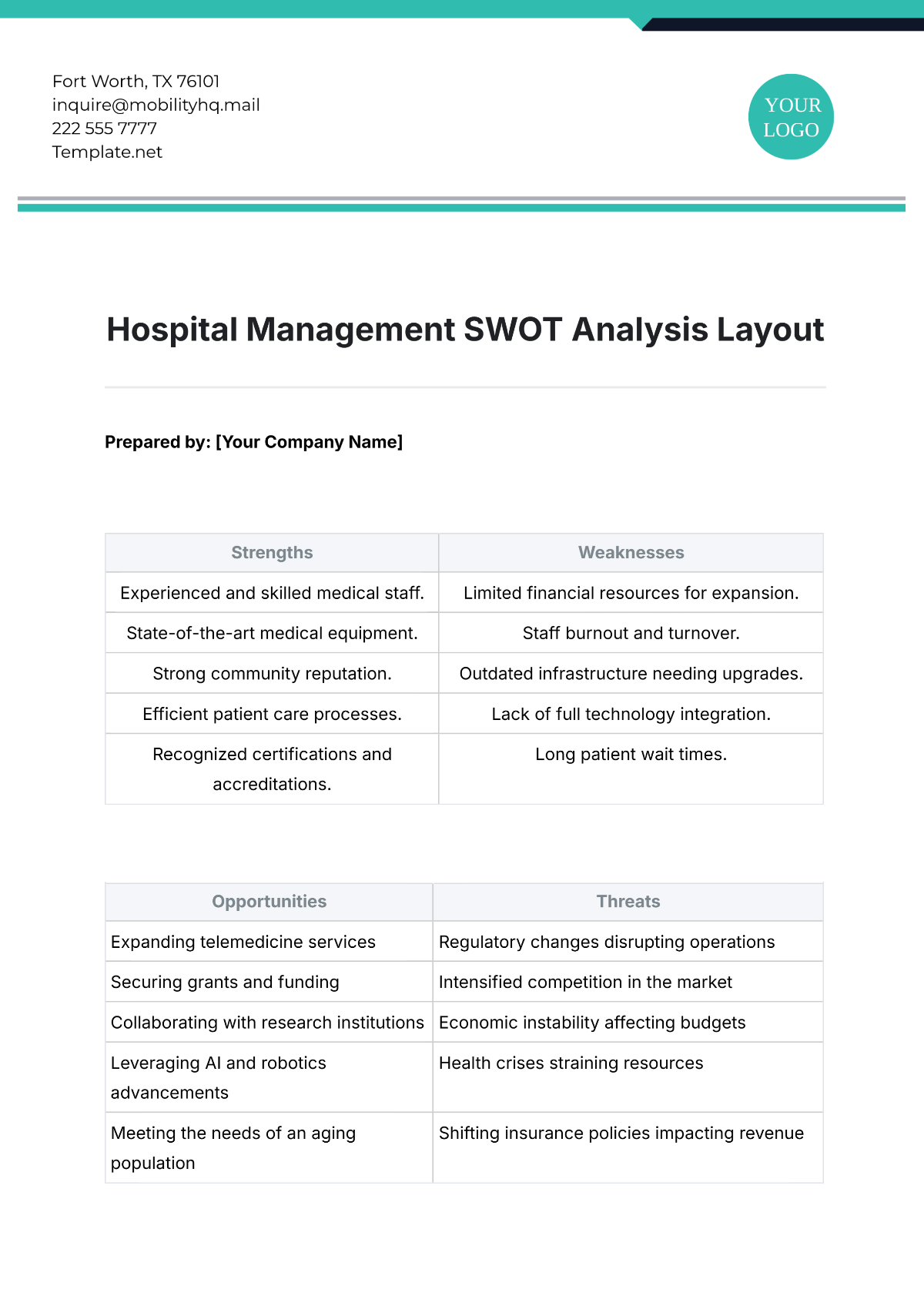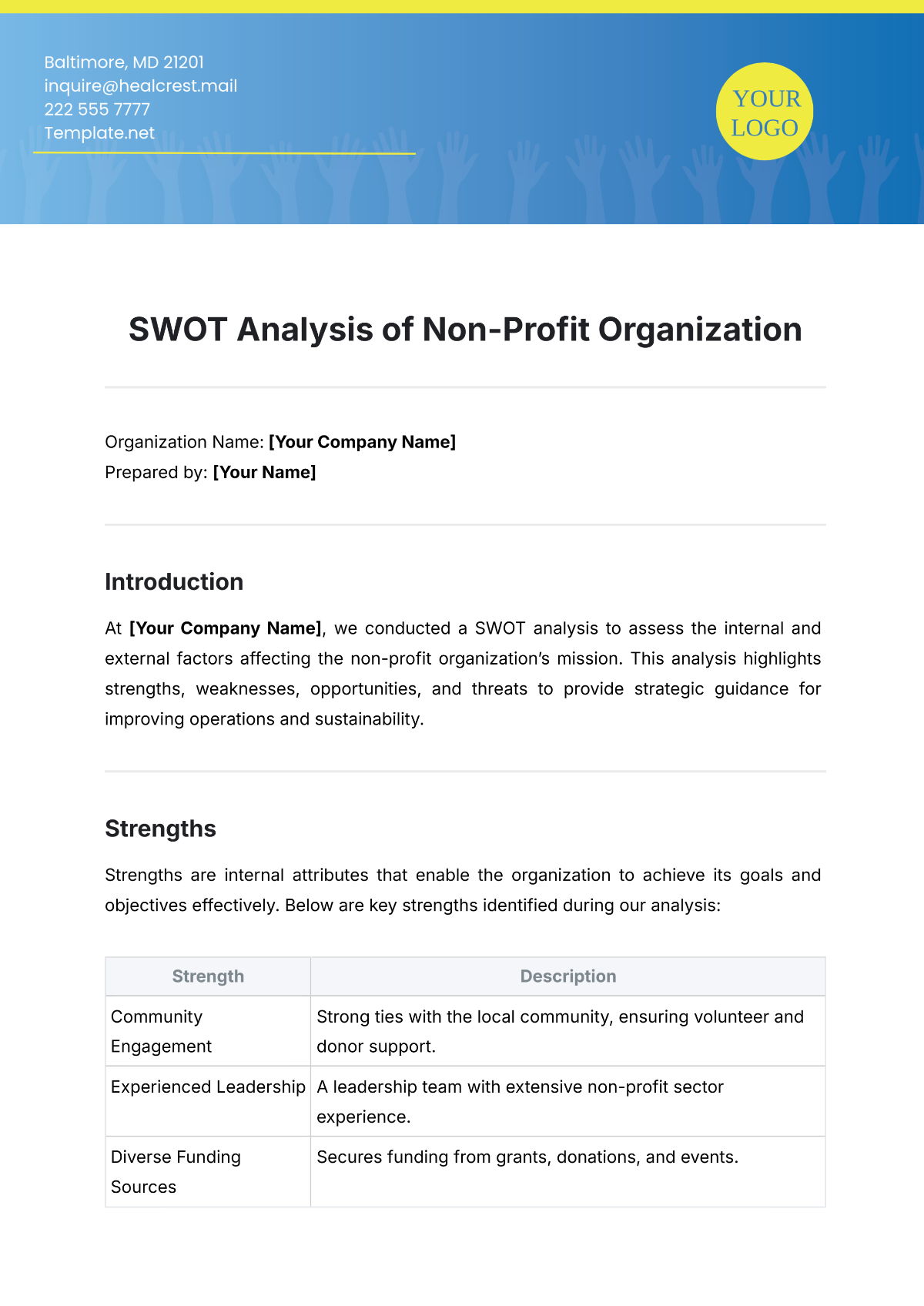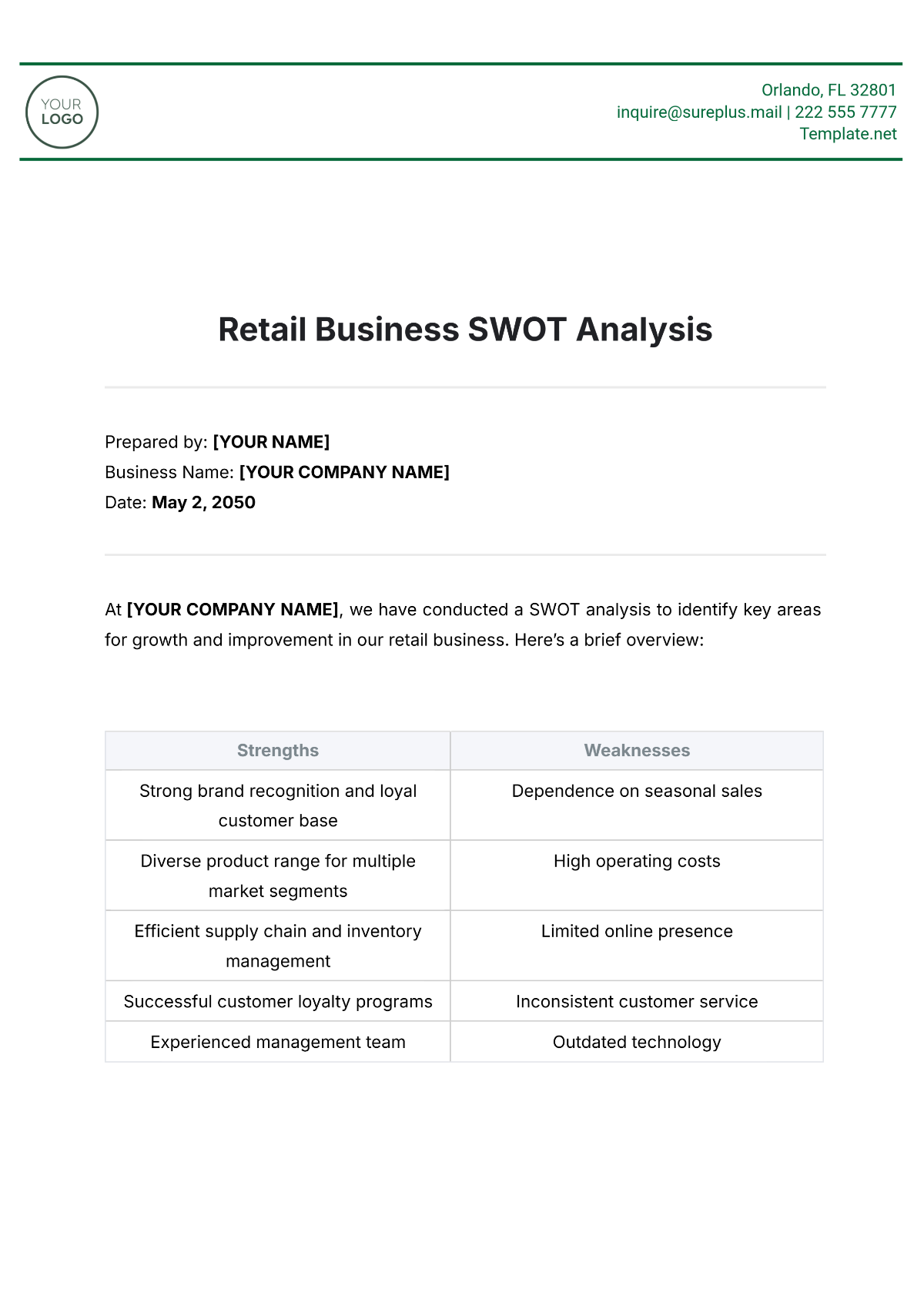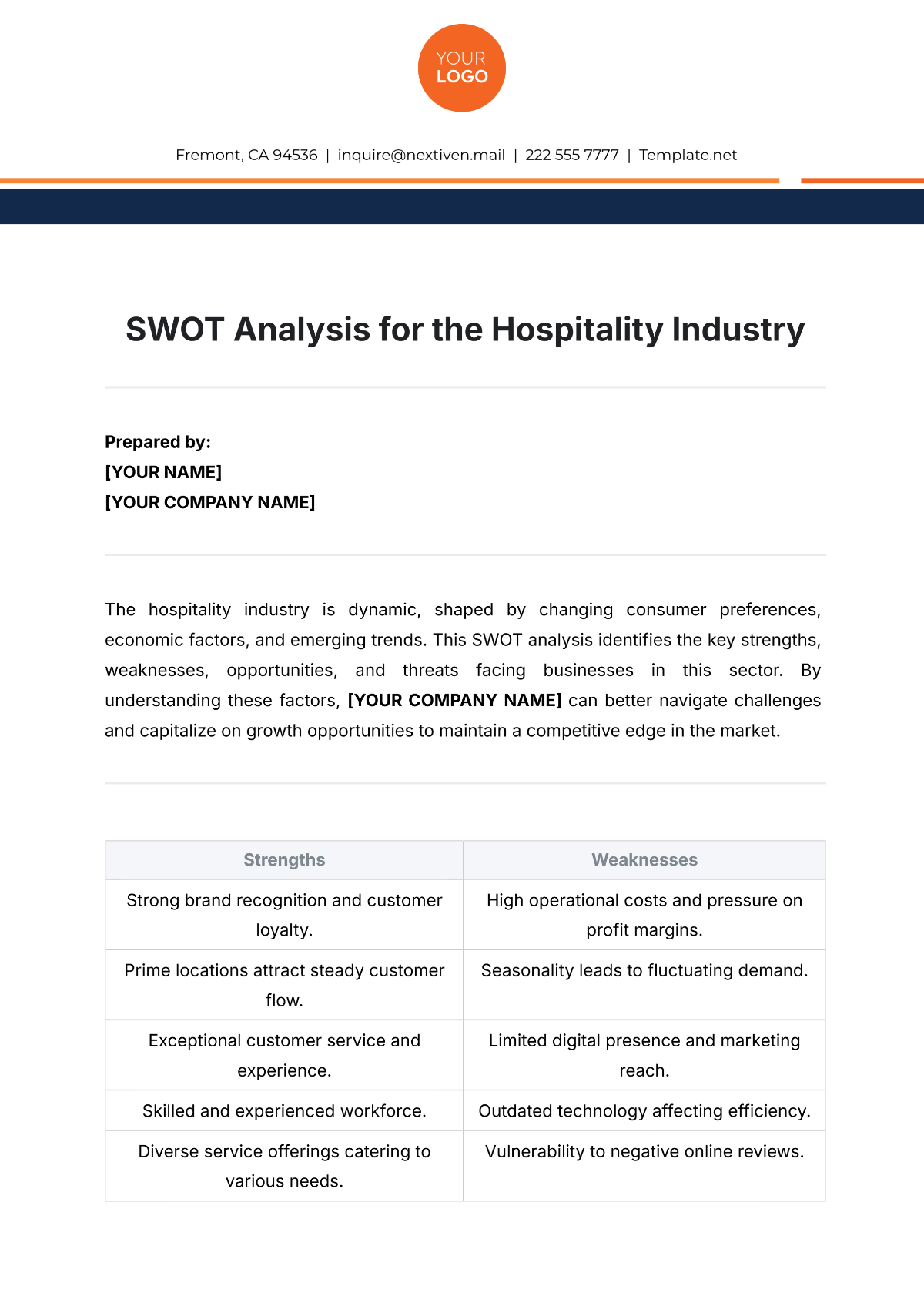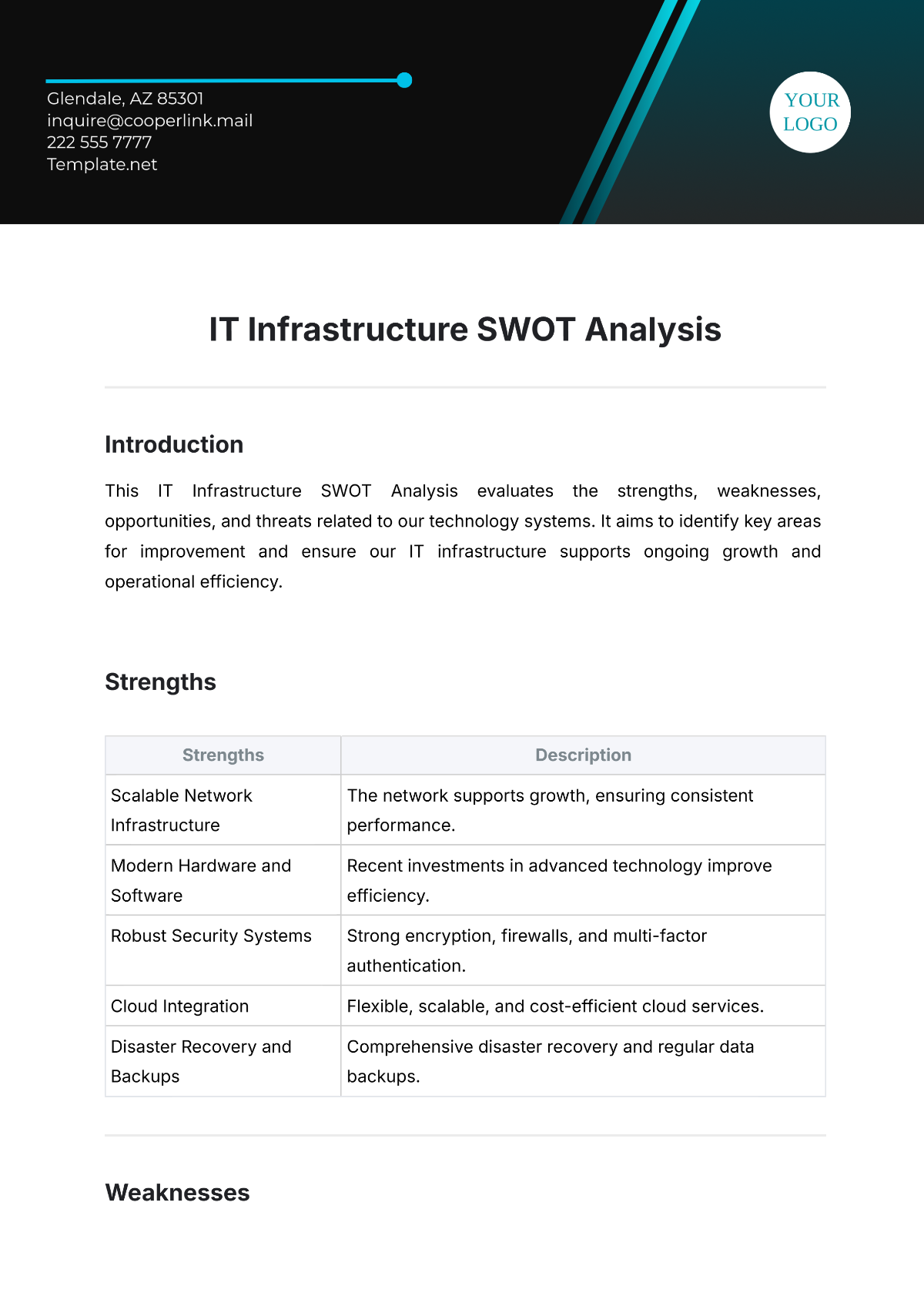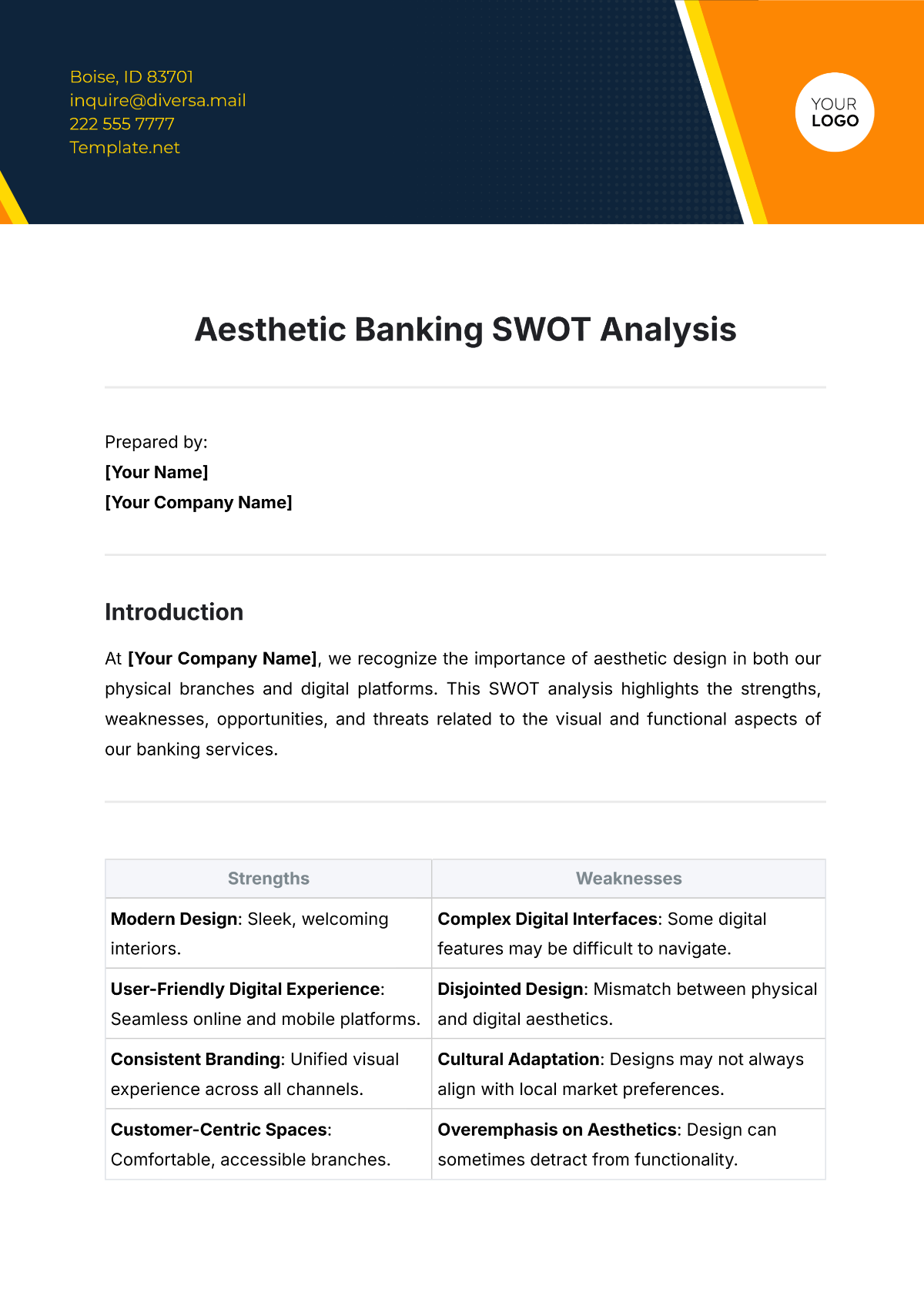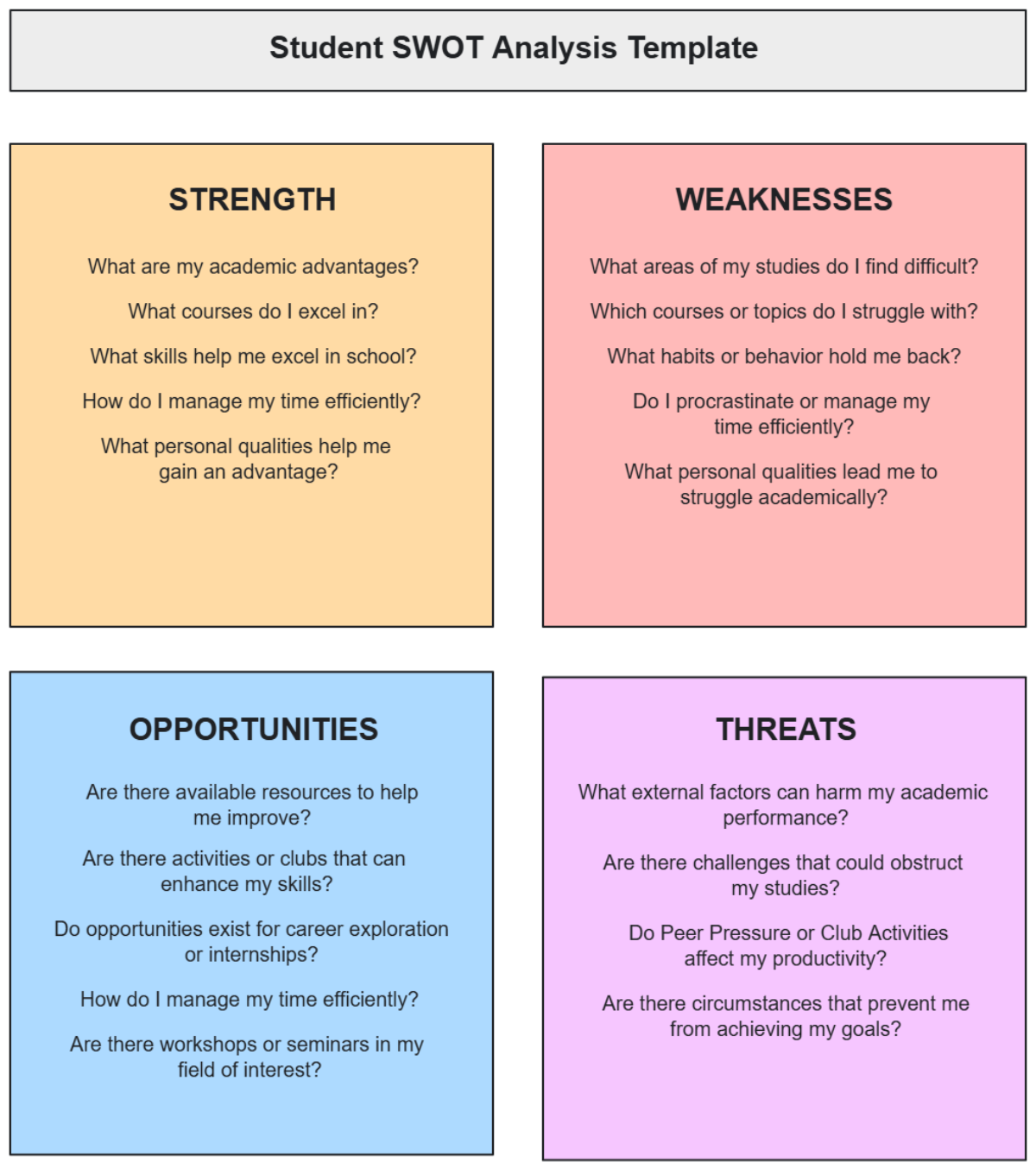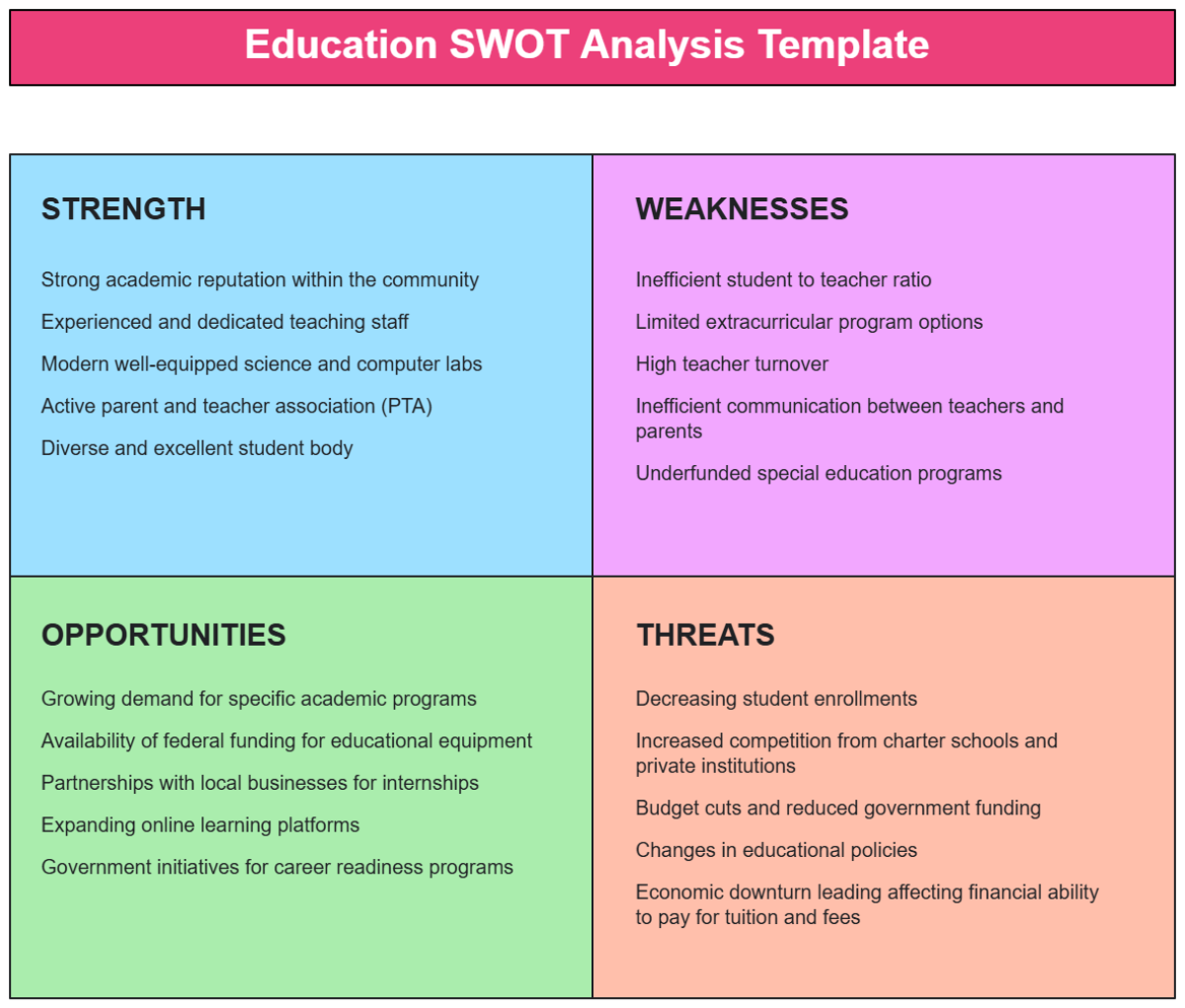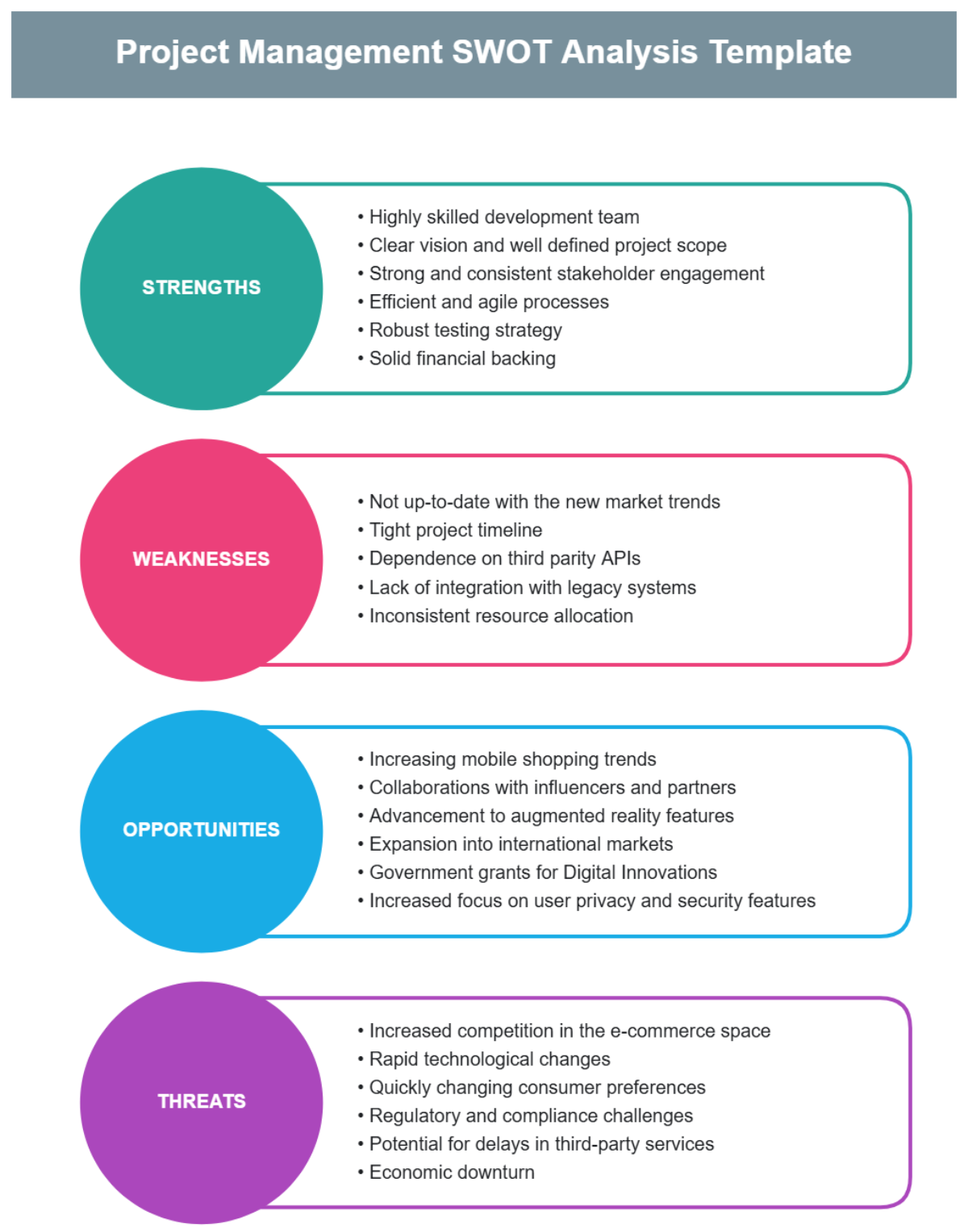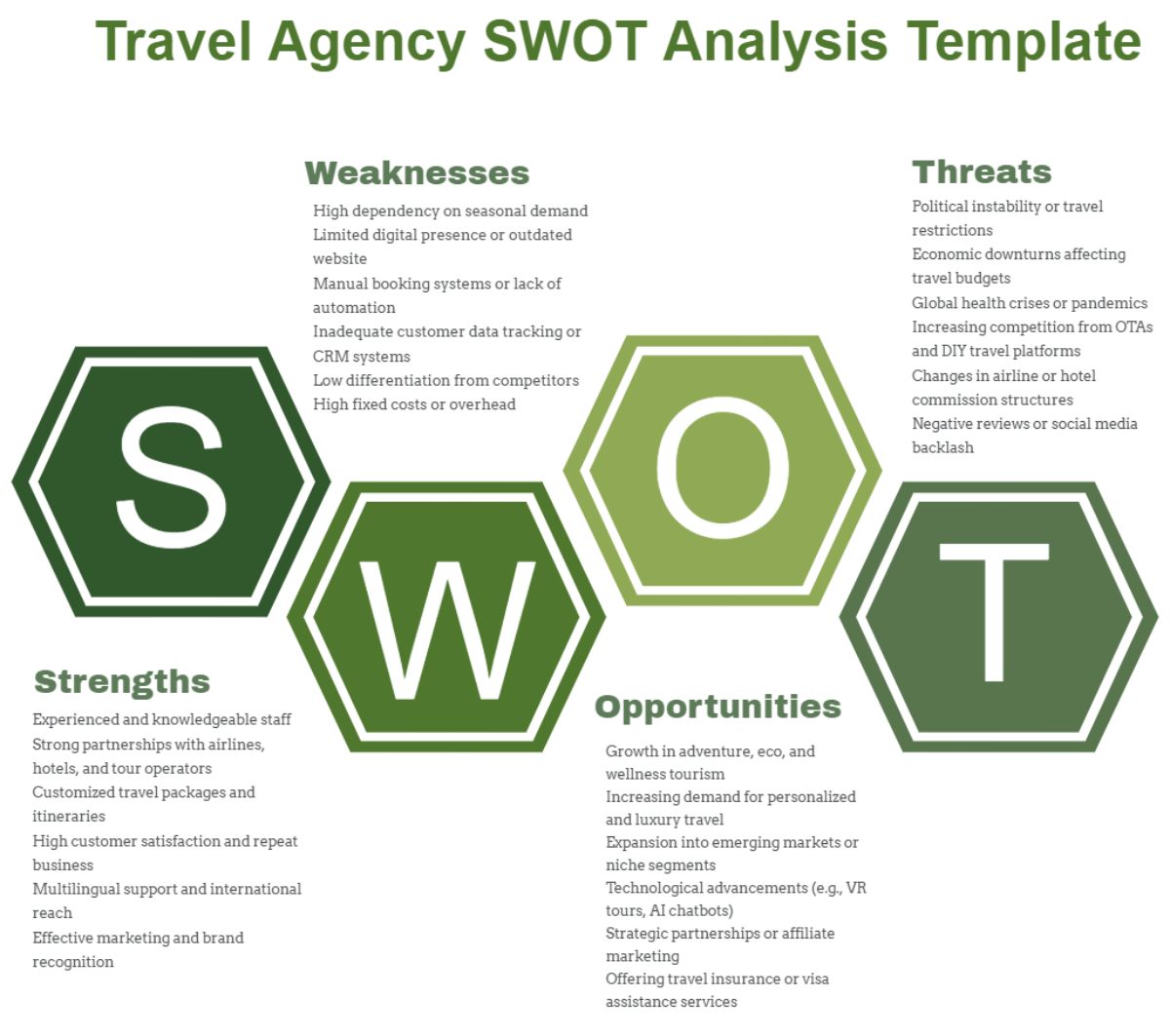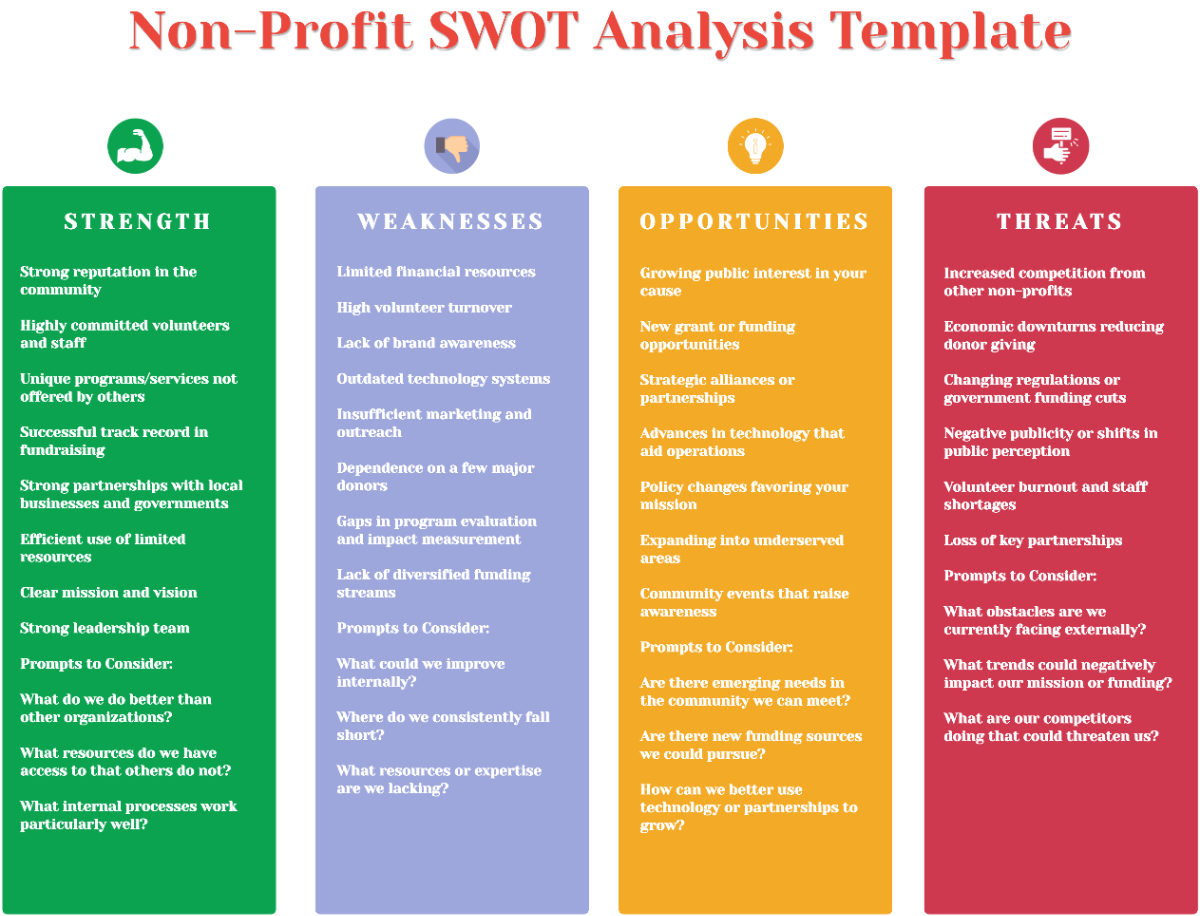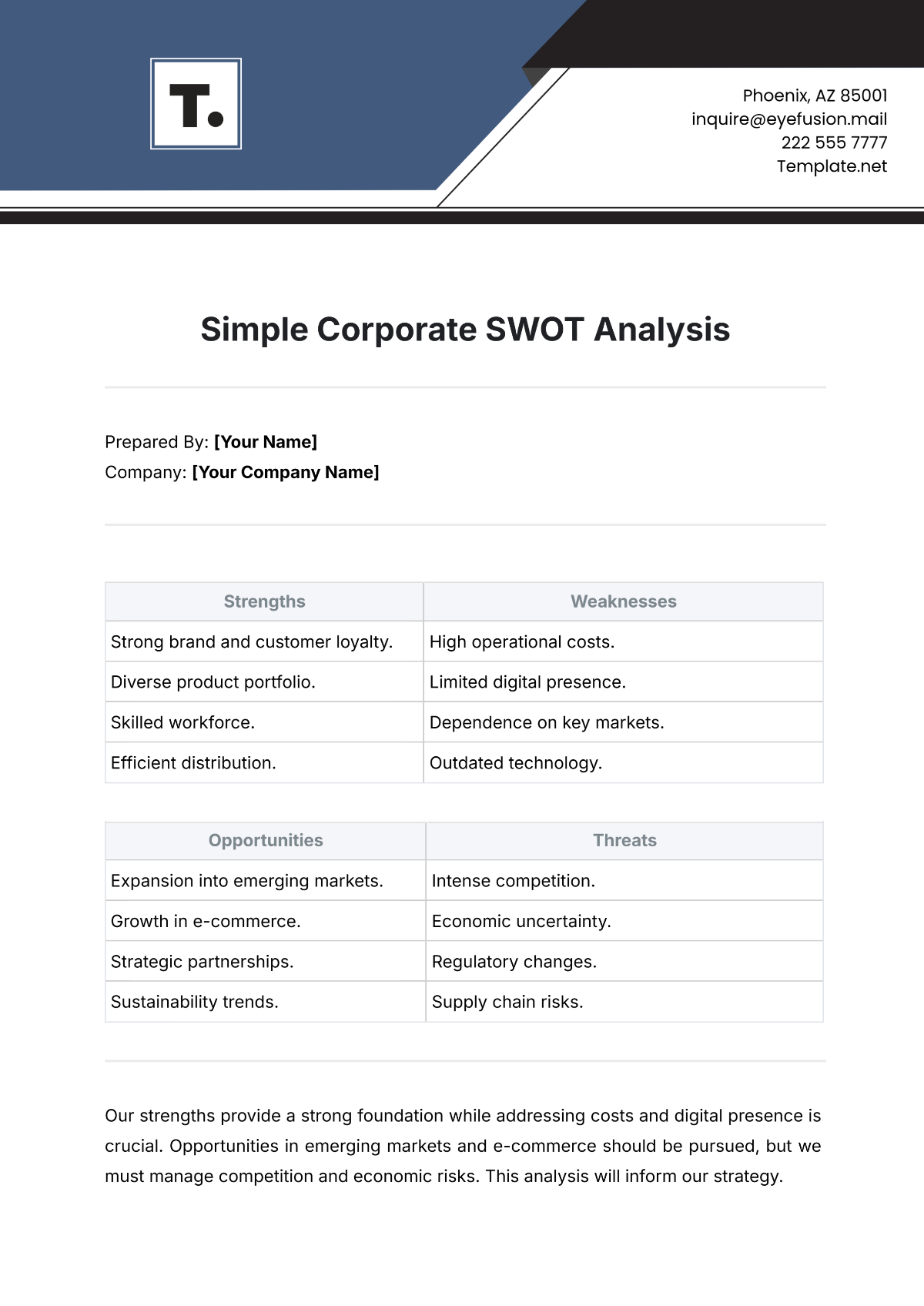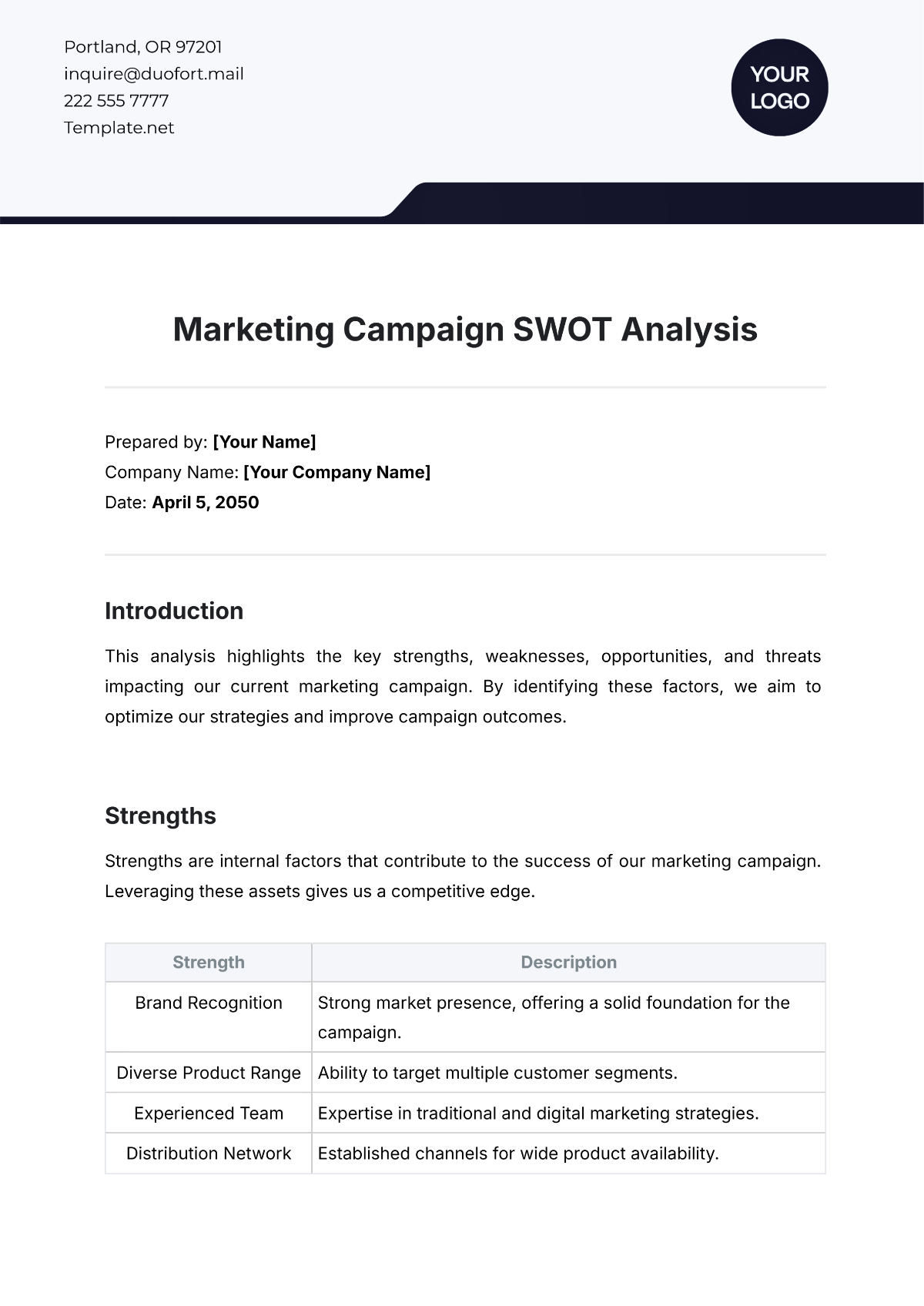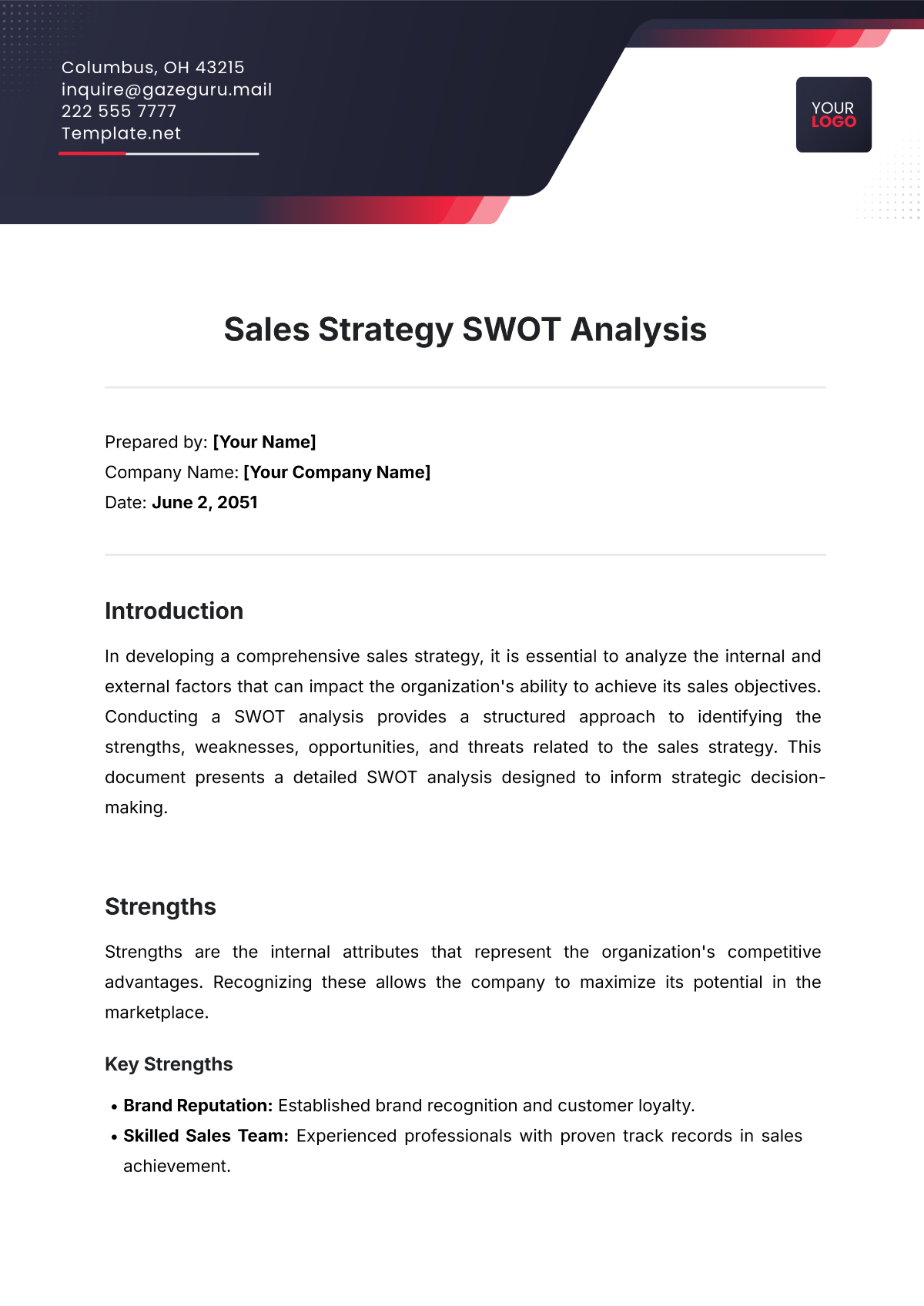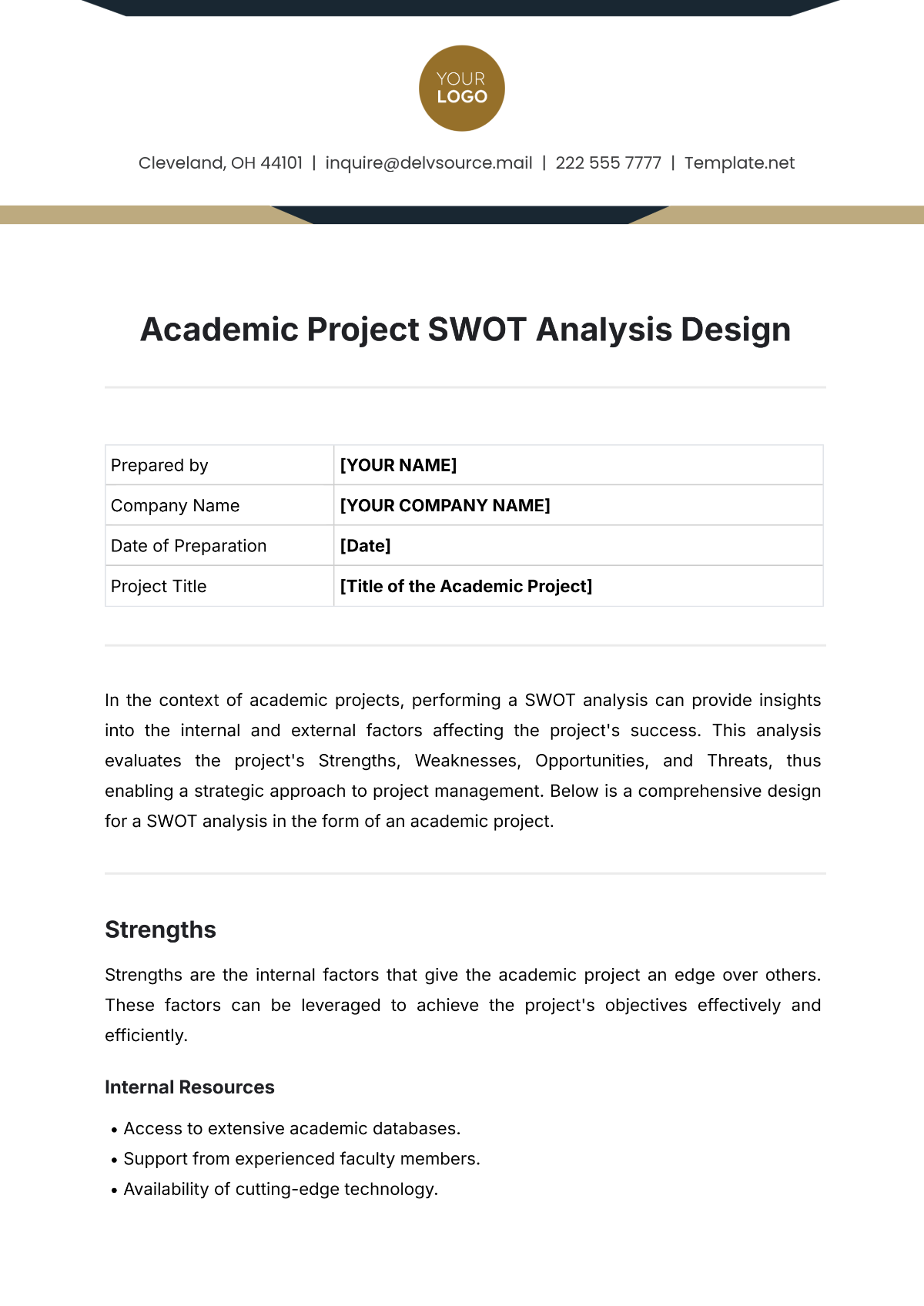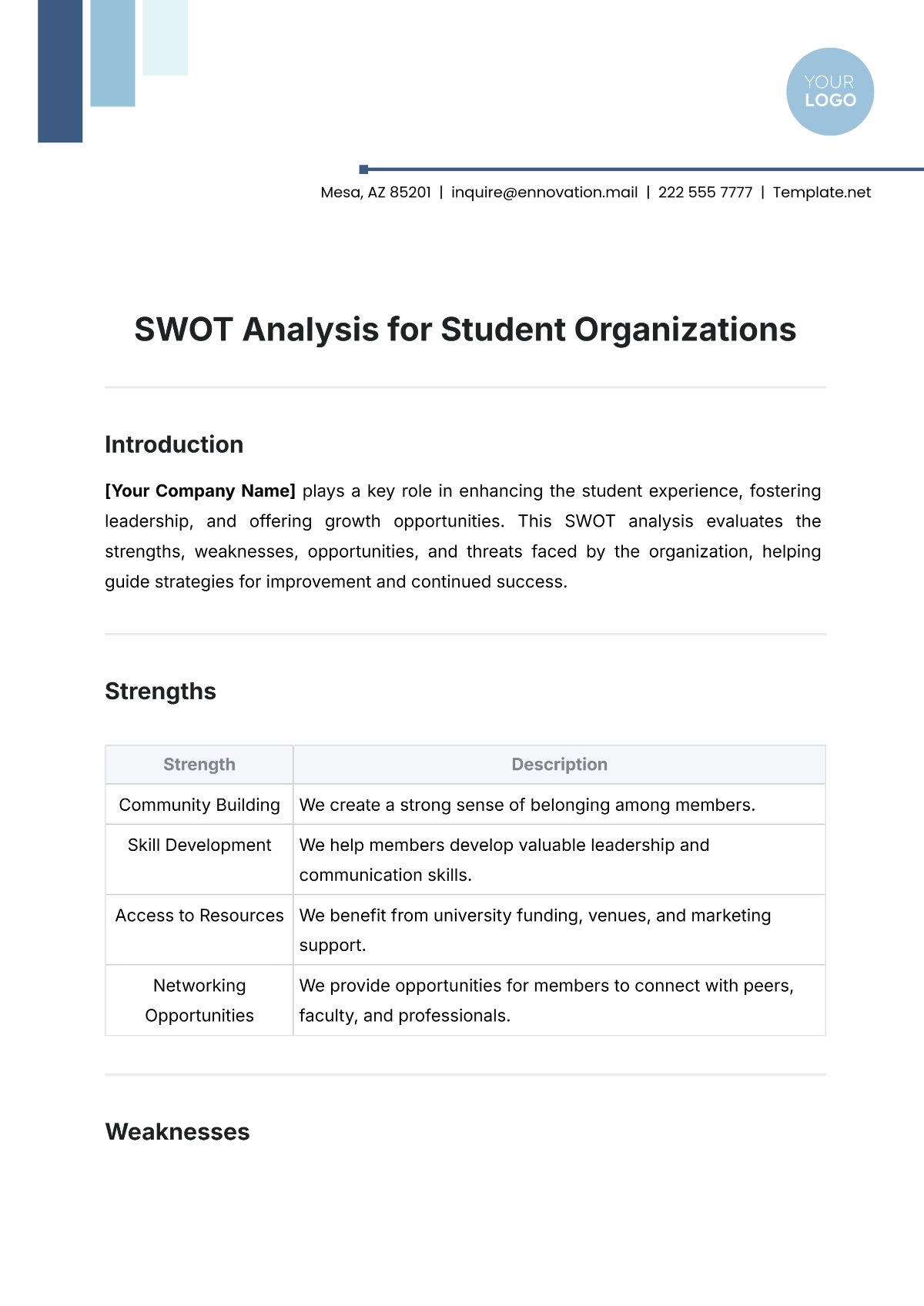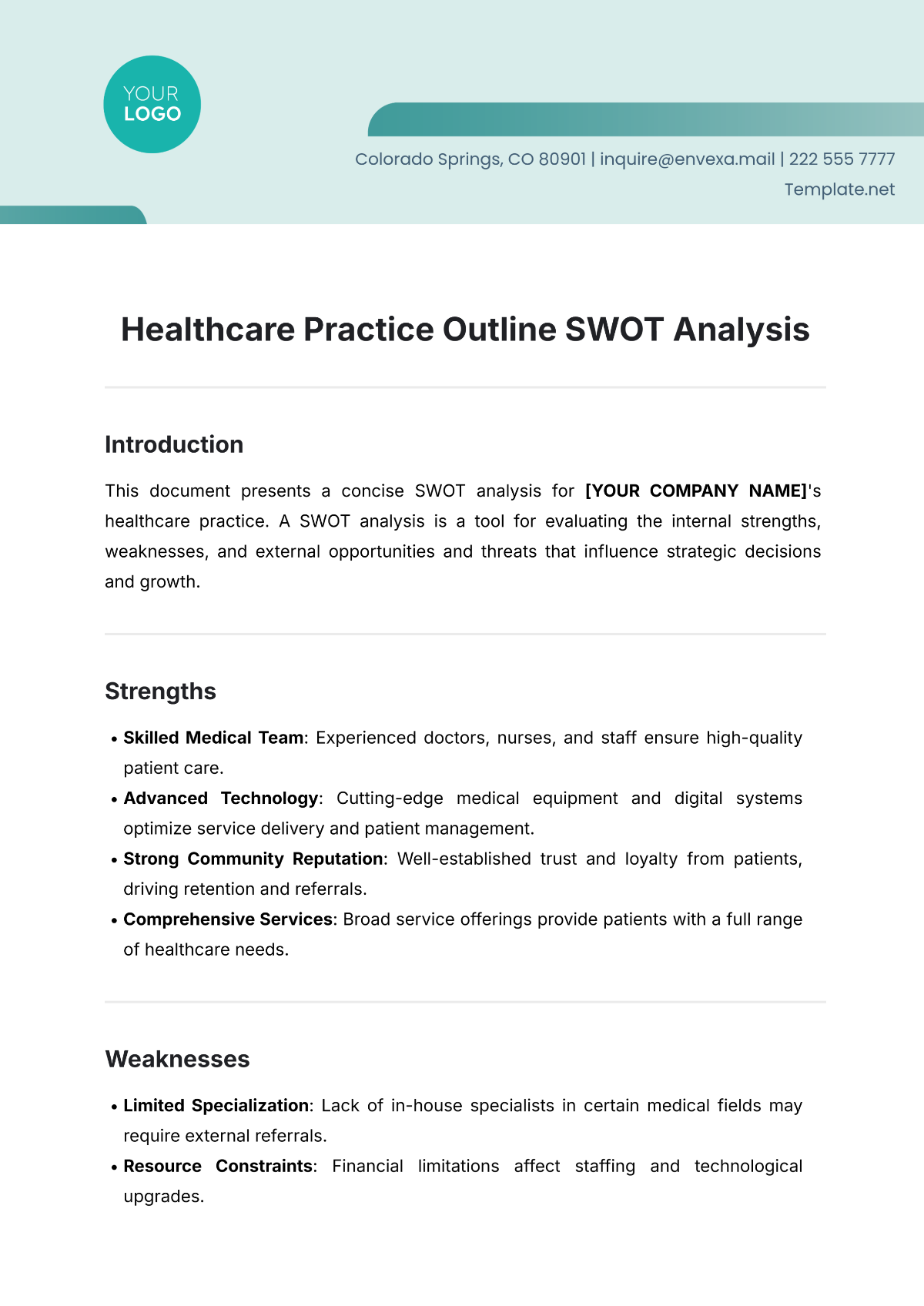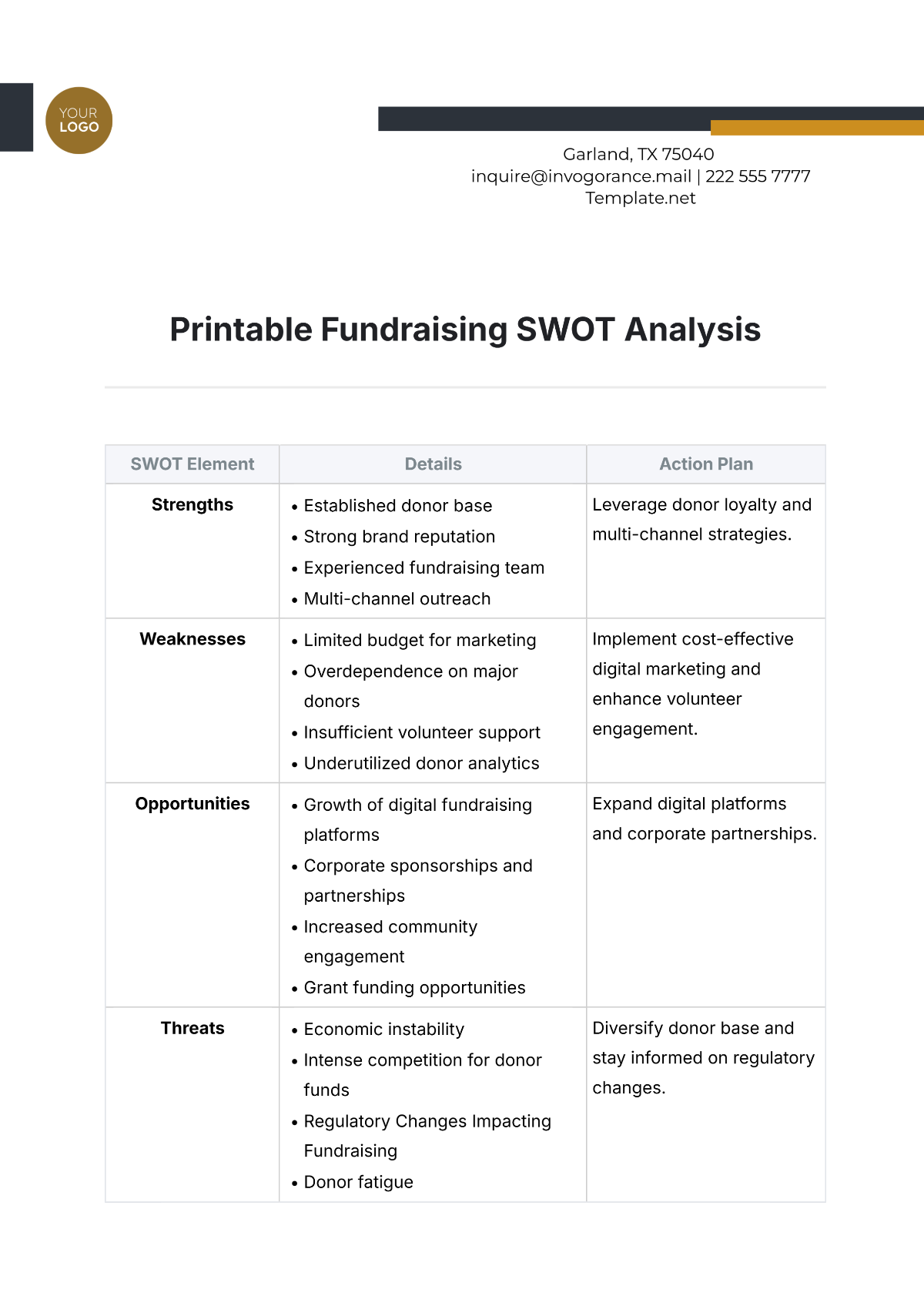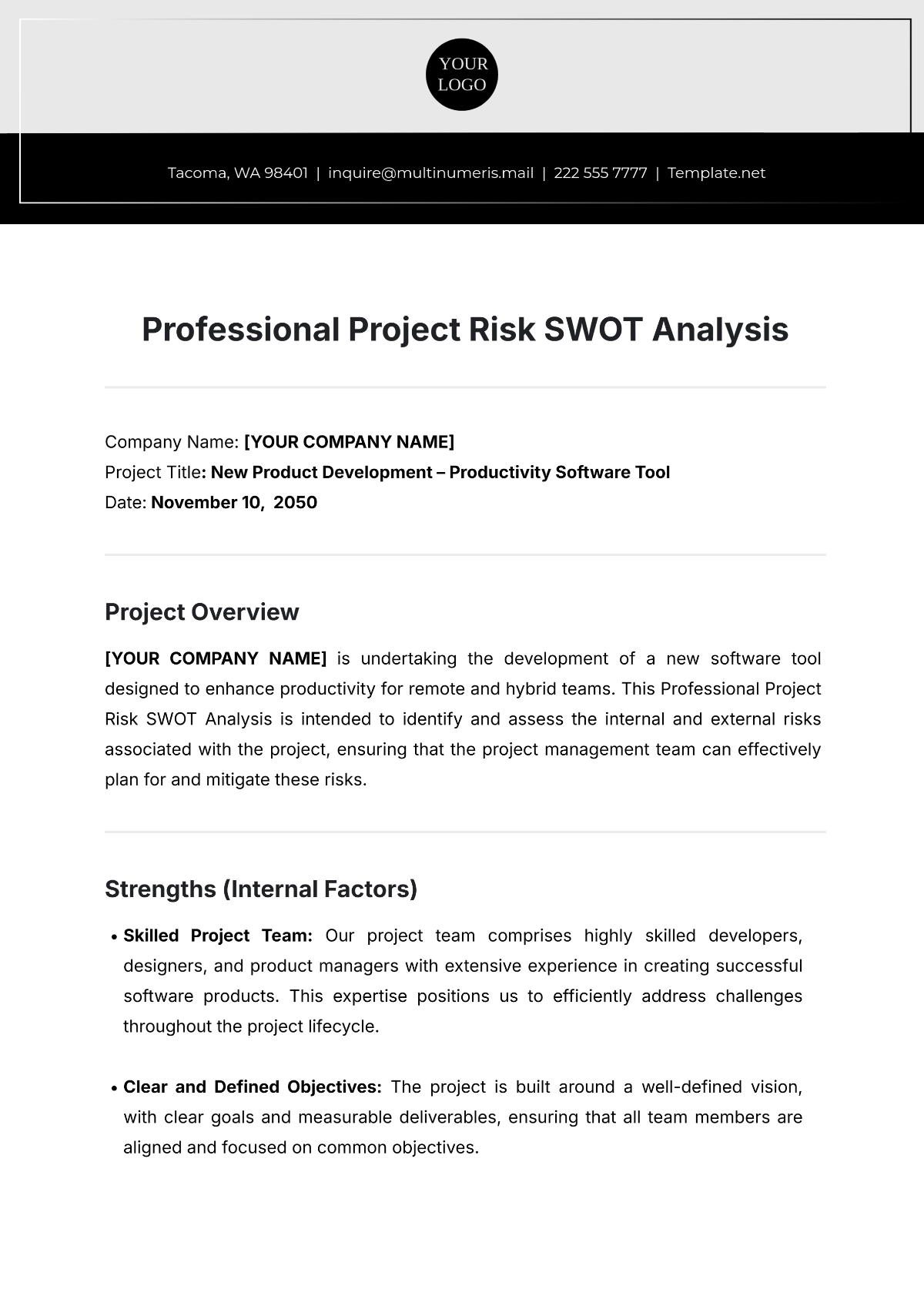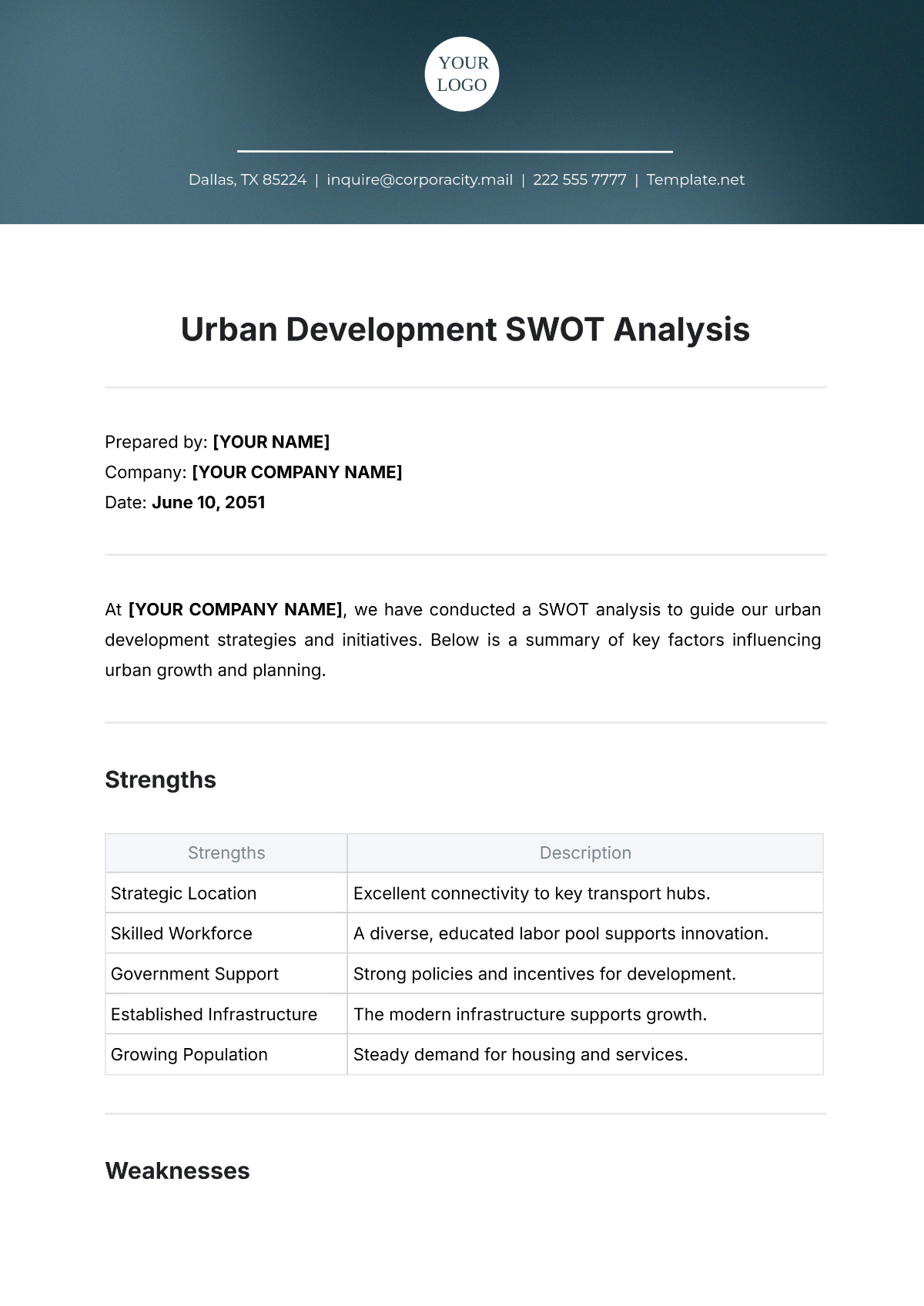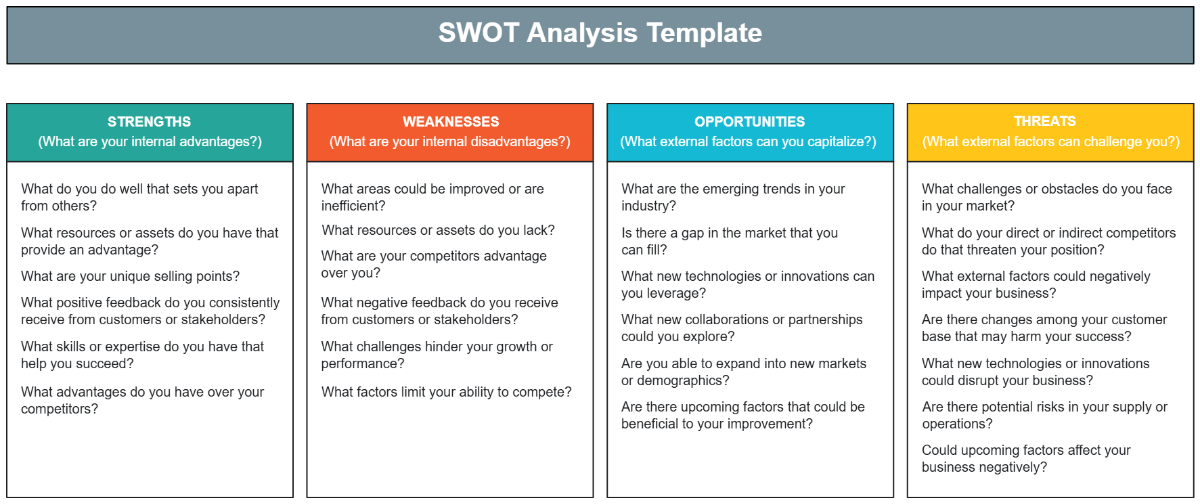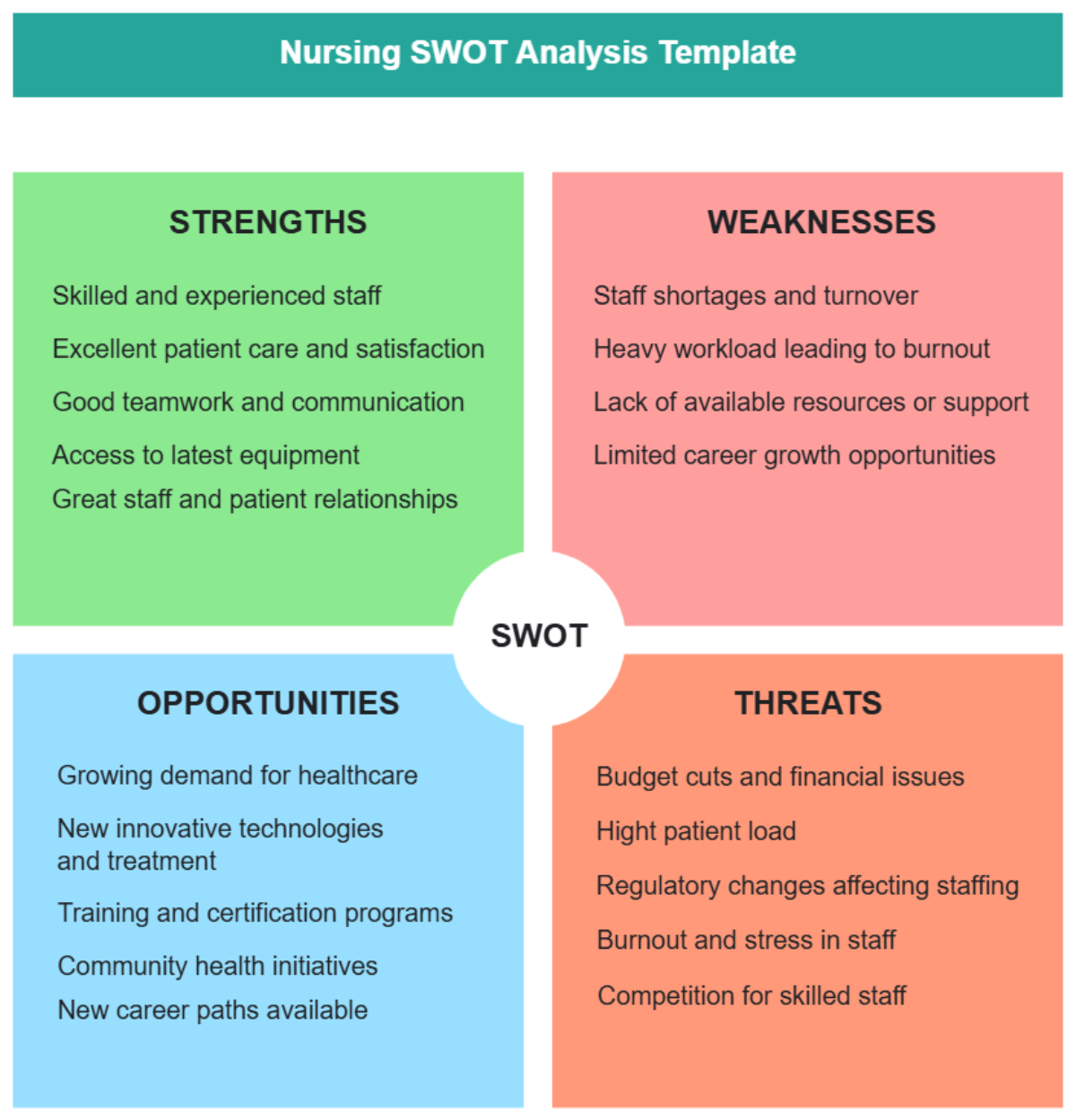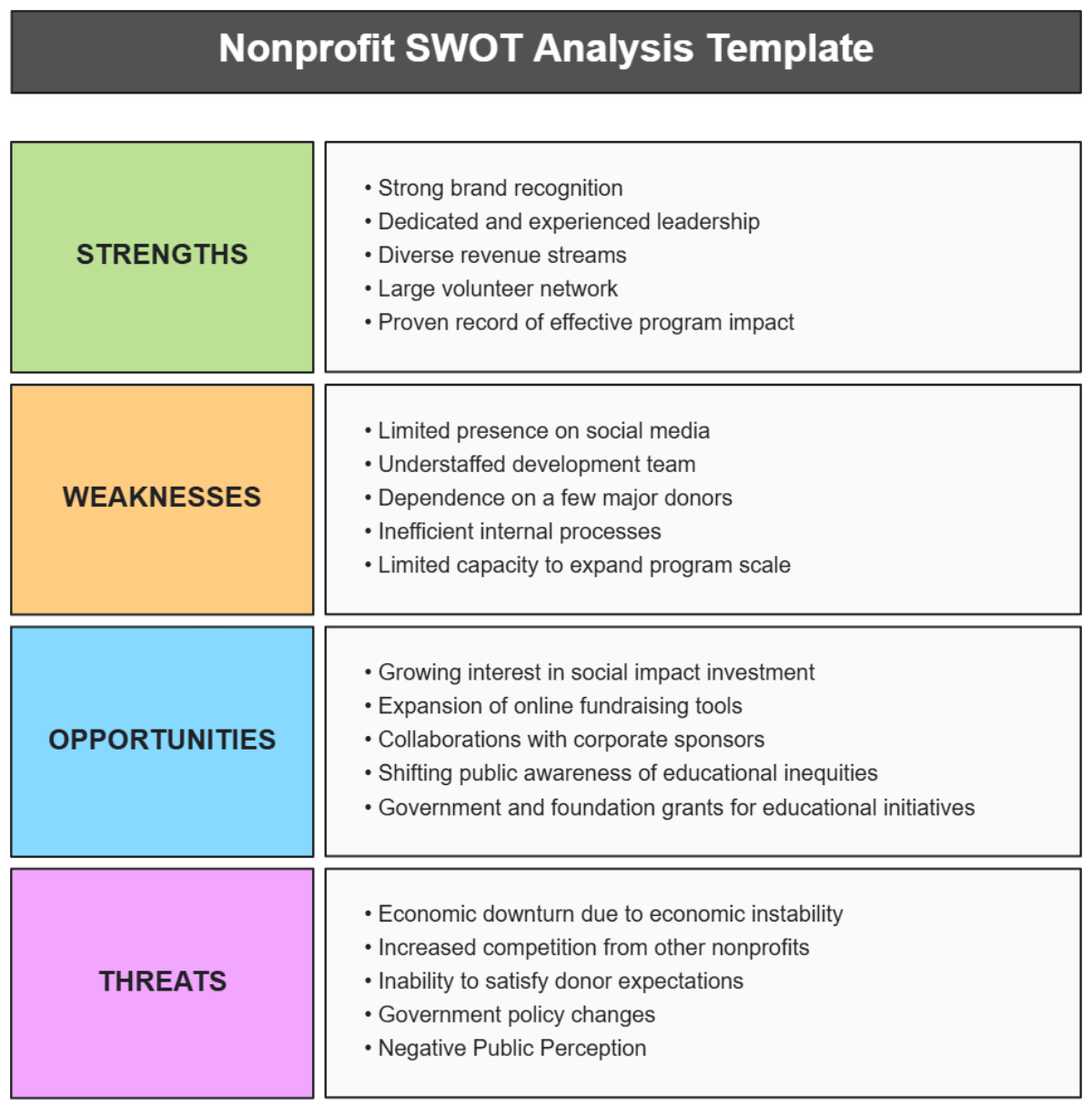Sales Strategy SWOT Analysis
Prepared by: [Your Name]
Company Name: [Your Company Name]
Date: June 2, 2051
Introduction
In developing a comprehensive sales strategy, it is essential to analyze the internal and external factors that can impact the organization's ability to achieve its sales objectives. Conducting a SWOT analysis provides a structured approach to identifying the strengths, weaknesses, opportunities, and threats related to the sales strategy. This document presents a detailed SWOT analysis designed to inform strategic decision-making.
Strengths
Strengths are the internal attributes that represent the organization's competitive advantages. Recognizing these allows the company to maximize its potential in the marketplace.
Key Strengths
Brand Reputation: Established brand recognition and customer loyalty.
Skilled Sales Team: Experienced professionals with proven track records in sales achievement.
Diverse Product Line: A wide range of offerings meet varied customer needs and enhance cross-selling opportunities.
Strong Customer Relationships: Long-term partnerships with key clients improve retention and sales volume.
Weaknesses
Weaknesses are internal factors that might hinder sales efforts or reduce the organization's market position. Identifying these allows for improvements to mitigate their impact.
Major Weaknesses
Limited Market Presence: Insufficient presence in emerging markets restricts growth potential.
Dependence on Key Accounts: High reliance on a few large accounts for the majority of sales revenue.
Outdated Technology: The use of antiquated CRM systems could limit sales tracking and efficiency.
Poor Supply Chain Management: Inefficiencies in logistics might affect product availability and customer satisfaction.
Opportunities
Opportunities are external factors that the organization can leverage to improve its sales outcomes and expand its market reach. Harnessing these can lead to significant growth and innovation.
Potential Opportunities
Market Expansion: Access to new geographical markets through strategic partnerships.
Technological Advancements: Adoption of AI and data analytics to enhance customer targeting and personalization.
Product Diversification: Introduction of new products tailored to emerging customer needs and trends.
Regulatory Changes: Easing of industry regulations could open up new business opportunities.
Threats
Threats are external challenges that could negatively affect the organization's sales performance. Recognizing these elements is crucial for developing strategies to mitigate their effects.
Identified Threats
Intense Competition: Increasing competitive pressure in the industry leads to potential market share loss.
Economic Downturn: Fluctuating economic conditions can result in reduced consumer spending and investment.
Technological Disruption: Rapid tech changes could render current products obsolete if not adapted swiftly.
Supply Chain Disruptions: Global supply chain issues impacting product availability and increasing costs.
Conclusion
This SWOT analysis highlights key areas of focus for the organization's sales strategy. By leveraging strengths and opportunities while addressing weaknesses and preparing for potential threats, the organization can formulate a robust sales strategy aimed at achieving sustainable growth and success in the competitive market landscape.
